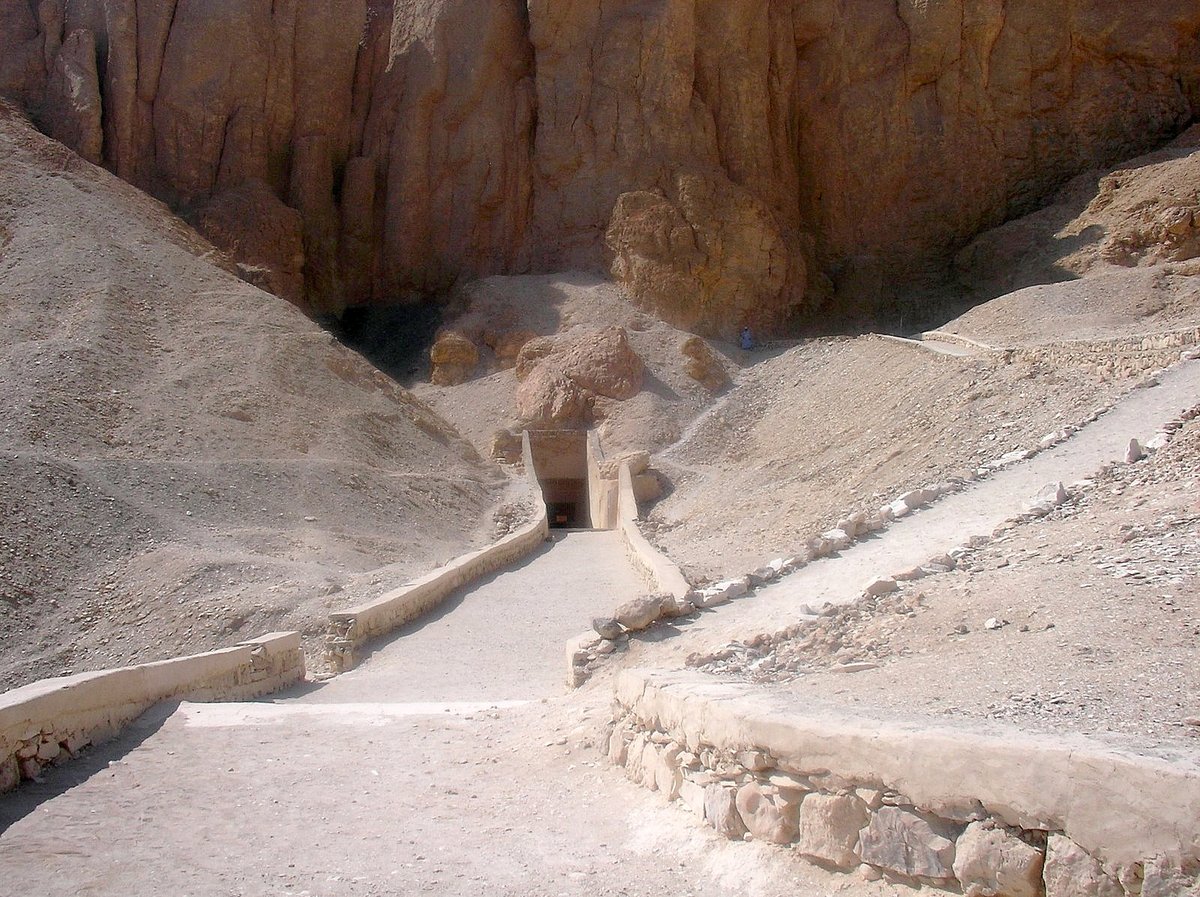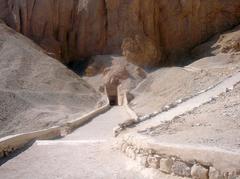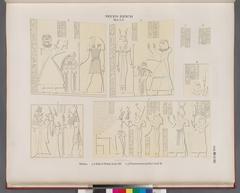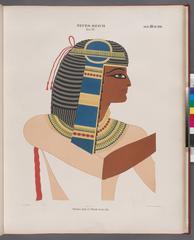
KV19 Luxor Visiting Hours, Tickets, and Historical Significance Guide
Date: 14/06/2025
Introduction to KV19 in Luxor: History and Importance
Luxor, once known as Thebes, is a city deeply embedded in ancient Egyptian heritage, most notably as the home of the Valley of the Kings. This necropolis was the burial ground for pharaohs and nobility during Egypt’s New Kingdom. Among the many tombs, KV19 holds a unique status. Intended for Prince Ramesses Sethherkhepshef (later Ramesses VIII) but ultimately used for Prince Mentuherkhepshef, son of Ramesses IX, KV19 is renowned for its remarkably well-preserved wall paintings. These murals depict scenes from the Book of the Dead and various deities, offering a vivid insight into the religious beliefs and artistic practices of the 20th Dynasty. While modest in size, KV19 provides a quieter, more intimate experience compared to larger tombs and enriches any exploration of Luxor’s ancient landscape. This guide presents KV19’s historical significance, architectural features, visitor details (tickets, hours), practical tips, nearby attractions, and resources to help you plan your visit (Mr and Mrs Egypt, Lonely Planet, Egyptian Ministry of Tourism and Antiquities).
Table of Contents
- Introduction to Luxor and the Valley of the Kings
- The Rise of Luxor as a Royal Capital
- The Valley of the Kings: Royal Necropolis
- Historical Significance of KV19
- Architectural Features and Layout
- Archaeological Importance
- Notable Finds and Artifacts
- Visiting Hours and Best Times
- Tickets and How to Purchase
- Accessibility and Visitor Tips
- Practical Information
- Special Events and Guided Tours
- Photographic Highlights
- Nearby Attractions
- Safety and Cultural Etiquette
- Frequently Asked Questions (FAQs)
- Plan Your Visit
Introduction to Luxor and the Valley of the Kings
Luxor, ancient Thebes, is celebrated as a hub of ancient Egyptian civilization. The Valley of the Kings, located on Luxor’s west bank, served as the burial place for New Kingdom pharaohs. The site is a highlight for any traveler interested in Egypt’s royal history and archaeological wonders. (Mr and Mrs Egypt)
The Rise of Luxor as a Royal Capital
Luxor reached its peak during the New Kingdom (c. 1550–1069 BCE), serving as Egypt’s political and religious center. Monumental structures like the Karnak and Luxor Temples bear witness to its significance. The annual Opet Festival further elevated the city’s status, celebrating the divine nature of the pharaohs.
The Valley of the Kings: Royal Necropolis
The Valley of the Kings, on the Nile’s west bank, was chosen for royal burials due to its symbolic association with the afterlife. Its natural pyramid-shaped peak, el-Qurn, was linked to rebirth and the goddess Hathor. (Egypt Planners)
Historical Significance of KV19
KV19 is situated between the tombs of Thutmose IV (KV43) and Hatshepsut (KV20). Originally begun for Ramesses VIII, it became the final resting place for Prince Mentuherkhepshef, son of Ramesses IX. The tomb’s high-quality but unfinished decoration provides valuable insight into Egypt’s late New Kingdom political shifts and burial customs (Lonely Planet).
Architectural Features and Layout
KV19 follows a simple, linear plan: a straight corridor descends about 43 meters into the hillside, terminating in a small, unfinished chamber (Theban Mapping Project). Despite its size, the tomb boasts vivid, well-preserved wall paintings, showcasing scenes from the Book of the Dead and royal iconography. The prince’s titles and cartouche reinforce his royal status, even though he never ruled as pharaoh.
Archaeological Importance
- Artistic Preservation: KV19’s wall paintings are among the best preserved in the Valley, with intense colors and detailed figures of deities such as Osiris and Anubis (Earth Trekkers).
- Royal Succession: The tomb’s reassignment highlights the instability of royal succession and the political turbulence of the era (Odynovo Tours).
- Funerary Practices: The presence of extensive funerary texts, usually reserved for pharaohs, indicates evolving burial customs for royal offspring.
- Epigraphy: KV19’s inscriptions provide valuable material for the study of late New Kingdom hieroglyphic evolution.
Notable Finds and Artifacts
Although KV19 was robbed in antiquity, archaeologists have recovered fragments of funerary equipment and pottery, helping reconstruct the burial context. The tomb’s painted reliefs themselves remain its most significant artistic legacy (Theban Mapping Project).
Conservation and Accessibility
KV19 is not always open to the public. When it is accessible, entry is carefully managed to protect its fragile artwork (Intrepid Scout). Conservation efforts by the Supreme Council of Antiquities and international teams help ensure its preservation for future generations. The tomb offers a quieter, less crowded experience compared to major tombs like Tutankhamun’s (The Discoveries Of).
Visiting Hours and Best Times
- General Hours: Valley of the Kings is open daily, generally from 6:00 AM to 5:00 PM; hours may extend to 6:00 PM in summer.
- Best Time: Early morning is ideal to avoid crowds and the heat, particularly between October and April.
- KV19 Access: The tomb’s opening schedule rotates for conservation. Always confirm its status at the ticket office or online (Local Guide to Egypt).
Tickets and How to Purchase
- Standard Ticket: Grants access to three tombs; special tombs, including KV19, usually require an additional ticket (about 100–200 EGP).
- Purchase: Buy tickets at the Valley’s entrance or through official tourism sites (Egypt.travel).
- Discounts: Reduced rates are available for students and Egyptians. Check the latest prices before your visit.
Accessibility and Visitor Tips
- Getting There: Reach the Valley of the Kings by taxi, private car, or organized tour from Luxor city.
- Inside the Valley: Paths are gravel and uneven; comfortable footwear is essential.
- Accessibility: The tomb is not wheelchair accessible due to steps and uneven terrain. Electric trams are available to reduce walking.
- Photography: Mobile phone photography typically requires a photo pass; flash and professional equipment are not allowed without a permit (Odynovo Tours).
- Climate: Bring water, sun protection, and dress modestly (shoulders and knees covered).
- Etiquette: Don’t touch the artwork, keep noise to a minimum, and avoid flash photography.
Practical Visitor Information
- Location: KV19 is on the main (East) Valley visitor path (Earth Trekkers).
- Restrooms: Facilities are available only at the visitor center.
- Amenities: A café, souvenir shops, and maps are found near the entrance.
Special Events and Guided Tours
Some specialized Egyptology tours include KV19. Guides at the visitor center provide historical context but are not permitted inside the tombs. Booking in advance is recommended (That Lady from Europe).
Photographic Highlights
KV19’s corridor is adorned with vibrant murals of Prince Mentuherkhepshef making offerings to Osiris, Anubis, and Horus, as well as detailed hieroglyphic texts. Ceilings are decorated with star motifs symbolizing the afterlife. Always respect regulations regarding photography.
Nearby Attractions
Combine your KV19 visit with other West Bank sites:
- Tombs of Tutankhamun (KV62), Ramesses VI (KV9), and Seti I (KV17)
- Temple of Hatshepsut
- Ramesseum and the Valley of the Queens Multiple tombs and temples can be visited in a half- or full-day itinerary (That Lady from Europe).
Safety, Security, and Cultural Etiquette
Security is robust, with screening at the entrance. Dress modestly and be polite to staff and vendors. Carry small bills for tips and transactions (Go Tours Egypt).
Frequently Asked Questions (FAQs)
Q: What are the visiting hours for KV19?
A: 6:00 AM to 5:00 PM in winter, 6:00 AM to 6:00 PM in summer, but KV19’s access may rotate.
Q: How much are tickets for KV19?
A: About 100–200 EGP for a separate ticket; standard Valley tickets do not always include KV19.
Q: Is KV19 wheelchair accessible?
A: No, the tomb’s terrain and steps limit accessibility.
Q: Can I take photos in KV19?
A: Non-flash photography is generally allowed with a camera ticket; verify current rules at the entrance.
Q: Are guides available?
A: Official guides can be hired at the visitor center but are not permitted inside the tombs.
Plan Your Visit
Plan ahead for the best experience:
- Confirm KV19’s opening status before your visit.
- Purchase tickets in advance if possible.
- Arrive early for cooler temperatures and fewer crowds.
- Consider combining your visit with other tombs or a hot air balloon ride over Luxor (Best Time To Visit Luxor).
- Download the Audiala app for up-to-date information and audio guides.
Summary: Key Points for Visiting KV19
- KV19 is a hidden gem in the Valley of the Kings, featuring vibrant wall paintings and historical insight into the 20th Dynasty.
- Access is subject to conservation rotations; always check availability.
- Tickets are required separately from the standard Valley entry.
- Guided tours and digital resources enrich your understanding.
- Combine your visit with other Luxor historical sites for a comprehensive experience.
- Respect preservation rules and local etiquette to help protect this heritage site.
For more information, see Earth Trekkers, Local Guide to Egypt, and the official Valley of the Kings Tourism Page.
References
- Mr and Mrs Egypt
- Earth Trekkers
- Lonely Planet
- Local Guide to Egypt
- We Seek Travel
- Against the Compass
- Egyptian Ministry of Tourism and Antiquities
- Valley of the Kings Tourism Page
- Odynovo Tours
- Theban Mapping Project
- Intrepid Scout
- The Discoveries Of
- That Lady from Europe
- Go Tours Egypt
- Best Time To Visit Luxor
- Private Tours in Egypt
- Wandering Wagars

































































